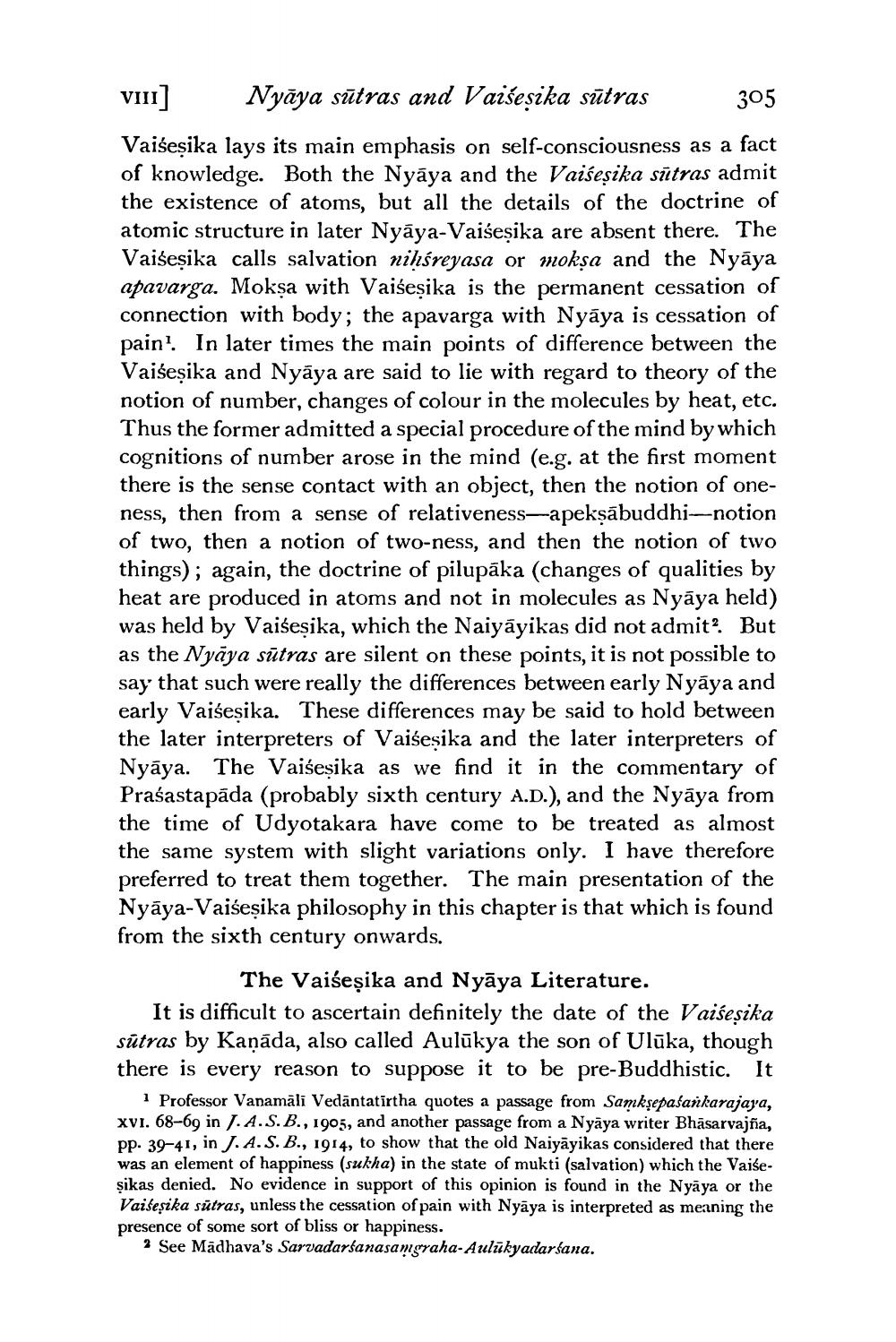________________
VIII]
Nyaya sutras and Vaišeṣika sūtras
305
Vaiseṣika lays its main emphasis on self-consciousness as a fact of knowledge. Both the Nyaya and the Vaiseṣika sūtras admit the existence of atoms, but all the details of the doctrine of atomic structure in later Nyaya-Vaiśeṣika are absent there. The Vaiseṣika calls salvation nihśreyasa or mokṣa and the Nyaya apavarga. Mokṣa with Vaiśeṣika is the permanent cessation of connection with body; the apavarga with Nyāya is cessation of pain1. In later times the main points of difference between the Vaiseṣika and Nyāya are said to lie with regard to theory of the notion of number, changes of colour in the molecules by heat, etc. Thus the former admitted a special procedure of the mind by which cognitions of number arose in the mind (e.g. at the first moment there is the sense contact with an object, then the notion of oneness, then from a sense of relativeness-apekṣābuddhi-notion of two, then a notion of two-ness, and then the notion of two things); again, the doctrine of pilupaka (changes of qualities by heat are produced in atoms and not in molecules as Nyāya held) was held by Vaiśeṣika, which the Naiyayikas did not admit. But as the Nyaya sutras are silent on these points, it is not possible to say that such were really the differences between early Nyaya and early Vaiseṣika. These differences may be said to hold between the later interpreters of Vaiseṣika and the later interpreters of Nyaya. The Vaiseṣika as we find it in the commentary of Prasastapāda (probably sixth century A.D.), and the Nyaya from the time of Udyotakara have come to be treated as almost the same system with slight variations only. I have therefore preferred to treat them together. The main presentation of the Nyaya-Vaiseṣika philosophy in this chapter is that which is found from the sixth century onwards.
The Vaiśeşika and Nyāya Literature.
It is difficult to ascertain definitely the date of the Vaiseṣika sutras by Kanada, also called Aulukya the son of Uluka, though there is every reason to suppose it to be pre-Buddhistic.
It
1 Professor Vanamali Vedāntatirtha quotes a passage from Samkṣepaśankarajaya, XVI. 68-69 in J.A.S.B., 1905, and another passage from a Nyaya writer Bhāsarvajña, PP. 39-41, in J. A.S. B., 1914, to show that the old Naiyayikas considered that there was an element of happiness (sukha) in the state of mukti (salvation) which the Vaiseşikas denied. No evidence in support of this opinion is found in the Nyaya or the Vaiseşika sutras, unless the cessation of pain with Nyaya is interpreted as meaning the presence of some sort of bliss or happiness.
2 See Madhava's Sarvadarśanasamgraha-Aulukyadarśana.




